Published Mar 18, 2018
Vision of Tomorrow: Our Road to the VISOR
Vision of Tomorrow: Our Road to the VISOR
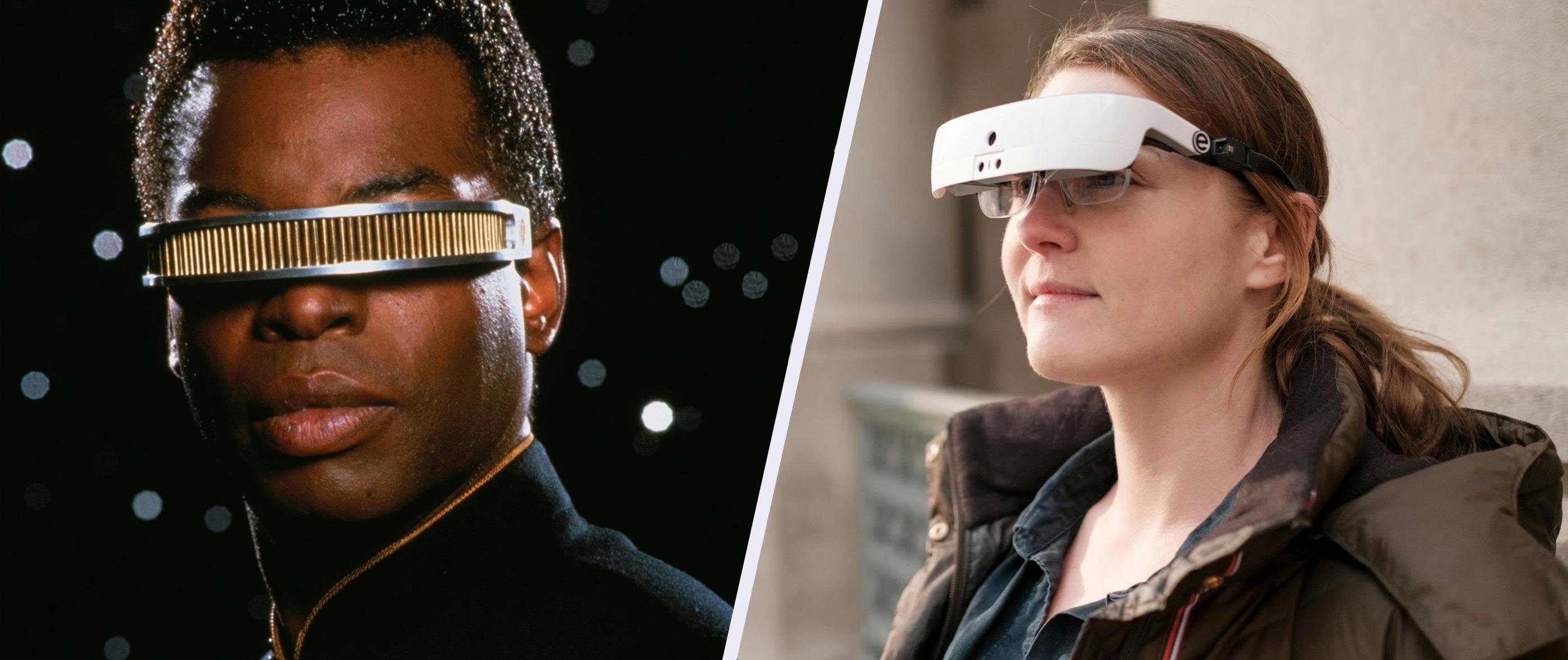
startrek.com
When Star Trek: The Next Generation premiered in 1987, it made a bold statement: physical challenges need not limit one’s potential. Lieutenant Geordi La Forge, a blind man, was assigned to pilot the Federation’s flagship.
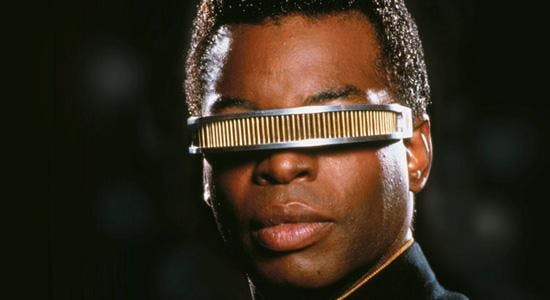
He was able to do this thanks to a nifty piece of technology, a visual instrument and sensory organ replacement — or VISOR — that allowed him to see by detecting electromagnetic (EM) signals.
At the time — and for most of the 30 years that followed — I didn’t think of the VISOR in terms of technology. Instead, I saw it as a symbol of that future in which the obstacles that now stand before us have been overcome. The idea that future tech would solve blindness was a given to me, and it wasn’t an issue on my mind.
Detached
I’ve been fortunate to have good vision throughout my life. Until recently, that is. In 2014, at the age of 42, I was diagnosed with a rapid-onset cataract. Within six months, my eye had been cut open, the lens shattered and replaced with an implant. In a sense, I had become a Borg. But the intraocular lens (IOL) I received restored my vision to a level that I had not experienced since my early twenties. Traditionally, IOLs required you to make a permanent decision between a fixed focus (near or far) or you could go with a bifocal. But the newer multifocal version that I received allowed me to look anywhere — near or far — and see clearly with instant focus. It’s amazing technology, and naturally I thought of La Forge and his new eyes in First Contact (only mine didn’t have the cool circuit-board pattern).
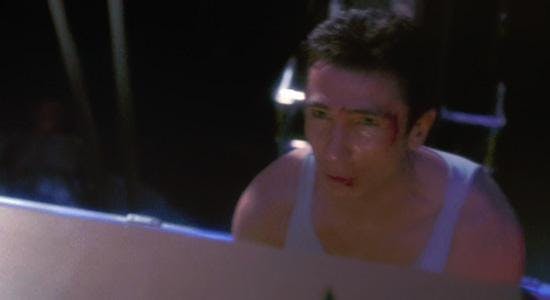
I thought I was out of the woods. I was wrong. Two years later, I suffered a retinal detachment, the same thing that happened to Lieutenant Reed in “Harbinger” after a fight with Major Hayes. Once again, my eye was being cut open. After successful treatment, another area became detached. And again. And again. Seven locations in all. Because I lack the compound retinas of a Suliban, it was imperative that I have mine repaired. After four surgeries in four months, I was left with an eye filled with silicon oil — an extreme measure to stop the recurring damage. That’s where I am today, still undergoing treatment 18 months later, looking out on a blurry and distorted world.
While I remain fortunate compared with many who suffer from low vision or blindness, the experience made me see the VISOR in a new light. What I once saw as a message of social equality I now saw as a tech solution to a serious, life-altering health issue.
Beyond Retinax
The influence Star Trek has had on scientists, doctors, and engineers is incredible — and it has provided me with hope. As a writer and editor, my livelihood depends on my eyes. The outcome of my treatment remains uncertain, and I sometimes wonder what the future holds.
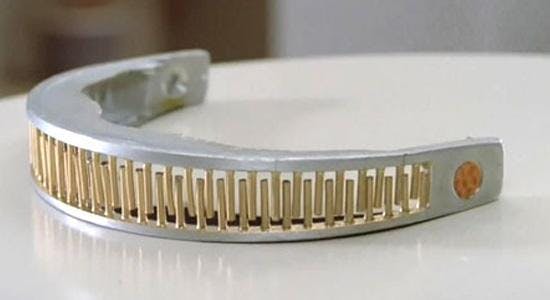
So, where are we on the road to the VISOR? This has become an important question for me. Not literally, mind you; I don’t really want to wear a hair barrette on my face and see the world as EM pulses. But the idea that technology can restore vision — as shown on TNG — must be driving real-world research and development. While there is not enough space here for a comprehensive exploration of the solutions, let’s take a look at the state of the technology.
EyeMusic
Going back nearly a decade, the Yissum Research Development Company of the Hebrew University of Jerusalem unveiled in 2009 an approach using a sensory substitution device that restores sight through other senses. In those who are blind, the brain repurposes the visual cortex to process sound. Yissum’s technology, now known as EyeMusic, uses a tiny wearable camera to capture the surrounding environment and convert it into a soundscape. The user then learns to identify objects based on how each is represented as sound.Although this may not seem like a true solution to restoring vision, it is similar to how La Forge sees. We’re never truly shown onscreen what the world looks like to him. We only get a few glimpses that show a representation that we can still understand. But the VISOR provides information from the full spectrum of EM signals. La Forge sees sound; so, in a way, hearing is seeing and seeing is hearing. Thus, EyeMusic may deliver something much closer to Trek even if it isn’t what we expect when talking about visual restoration.
Implants
The mission of Paris-based Pixium Vision is “to create a world of bionic vision for those who have lost their sight.” The company’s IRIS II system helps individuals make their way around unfamiliar environments. It does this by delivering light and shape perception through an implant with 150 electrodes that is surgically attached to the surface of the retina. A camera integrated into a special pair of glasses converts the surrounding environment into electrical signals that stimulate the nerve cells of the retina, restoring basic vision. The first implantation was performed in September 2016 at Moorfields Eye Hospital in London.
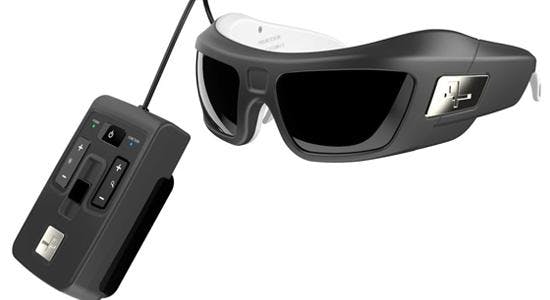
Pixium’s technology is advancing rapidly, and in January 2018 the next-generation PRIMA system was implanted in a human for the first time at the Rothschild Foundation Hospital in Paris. This miniaturized, wireless sub-retinal implant packs 378 electrodes on a 2x2-millimeter photovoltaic chip that is just 30 microns thick. The procedure takes less time and is less invasive compared with the IRIS II system and can provide higher resolution. Like IRIS II, PRIMA utilizes special glasses and a small pocket computer. This initial implantation is part of a study that will trial the system in up to five patients for 36 months.
Getting Graphic

Not all solutions under development require modification of the retina. Much of the power in modern computers is found in the graphics processing unit (GPU), which is used for tasks traditionally performed only by the CPU. OxSight, Ltd., a venture of the University of Oxford, is putting GPUs at the heart of smart glasses that help the partially sighted or blind. The company, named one of five finalists for GPU maker NVIDIA’s 2017 Global Impact Award, formed in 2016 after a successful trial of the technology with 300 blind participants in the UK. The OxSight Helios smart glasses are powered by NVIDIA’s Tegra GPU. In trials, about 30 percent of participants reported a significant, immediate improvement.
eSight
For those with low vision, one of the most talked-about solutions is the eSight 3 from Toronto-based eSight Corp. These electronic glasses, previously highlighted here on StarTrek.com, enable the legally blind to see. They are the most accessible option to the general public and are available for purchase in 42 countries.
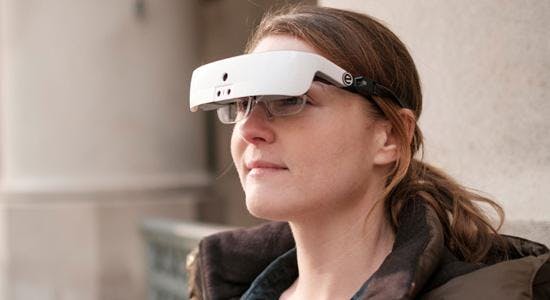
The eSight system differs from IRIS and PRIMA in that no surgery is required. Rather than delivering information directly to the retina via implants, eSight displays a full-color, hi-resolution video feed of the surrounding environment on two near-to-eye OLED screens. The user can fine tune the input to best meet their personal vision needs by adjusting the color, contrast, focus, and brightness of the video. They can even magnify what they are seeing up to 24x—a bit like the capability of La Forge’s implants as seen in First Contact.
Vision of Tomorrow
Of course, technology such as this may not be the final solution. Gene therapy remains a promising approach and may ultimately be the way to eradicate blindness. But the four hardware solutions presented here can been seen as inspired by and leading to the VISOR.
As someone dealing with vision loss and uncertain what tomorrow holds, these advances give me hope. But even greater hope comes from knowing that we can already do these things in 2018. With our current rate of advancement, I have no doubt that the technology we possess in the 24th century will far surpass the prosthetic worn by Geordi La Forge. It was visionary for its time but, as is most often the case, it is difficult to anticipate the tech of tomorrow. And that is thanks, in large part, to Star Trek itself and the vision it inspires.
C Bryan Jones is founder and publisher of the Trek.fm podcast network, host of The Ready Room, co-host of The Orb: A Star Trek Deep Space Nine Podcast, and host of Notes from The Edge, which explores connections between Star Trek: Discovery and the greater franchise. Here on Earth, he lives in Tokyo where he’s editor-in-chief of The ACCJ Journal, the magazine of the American Chamber of Commerce in Japan. He can also be found on Twitter @cbryanjones.

